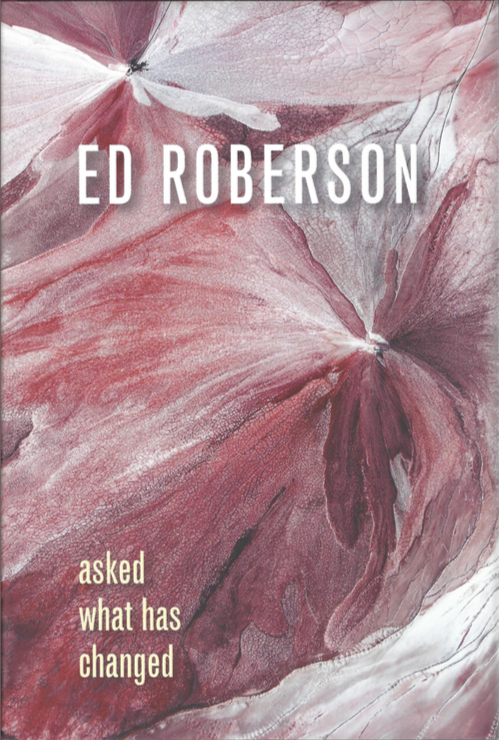
To ask is to seek out definitive information, observations, and answers. To answer is to respond, to muse, to reflect, to try to construct a new narrative. Ed Roberson’s Asked What Has Changed is all about asking, looking, observing, predicting, and the search for answers in the wake of an ever-changing climate. I can’t help but first want to sit with the title of the book, which is also the title of the opening poem of the collection, and think about who is doing the asking. Rather than being a title that functions as a call to action, as one may presume if the title were in the imperative and urging the reader to ask what has changed, Asked What Has Changed implies that there is already a subject, an asker. Roberson is answering.
The opening poem situates Roberson’s perspective and offers a framework for the collection where “even staring out the window” of his Chicago apartment “is changed.” The scale of things that have changed can be observed from his very own apartment window, but they can also be felt deeply, as “The eye is not filled with seeing, with only / seeing, but with understanding the sight.” Not only is Roberson concerned with what can be seen in the immediate present, he is also deeply concerned with the implications of how we see ourselves in relation to nature, how we see ourselves in relation to others, and how we can and have evolved. Throughout the collection, Roberson reflects on the violence in the streets and that which is inflicted upon the community through environmental racism, in which “Industries and water-starved communities as far as out west / have their eyes on this / single source of fresh water to fill their pockets. / Their eyes on this the same as on those neighborhoods / needed out of their way or working for them.” And yet, he also reflects on the relationships we have with our nonhuman kin: the geese, the kingfishers, the gulls, the swallows.
Some of the poems in the collection engage directly with the Anthropocene, the extractive nature of capitalism, and the way in which humans, particularly those of us in Westernized societies, fail to see ourselves in relation to the natural world. Roberson comments on the overconsumption of resources—the idea that we are immune to the fact that “a world that runs out on runs out of itself dies.” For the world in which we live is not made solely for our taking, and yet we must also be resistant to the scarcity mindset. Overconsumption and the hoarding of resources by the elite is very much a problem, but it is the unequivocal lack of dispersal of these resources that causes the most undue harm. And yet, if and when the world does in fact run out of itself, when we go from a “Chicago size huddle of us left” to “no size no / huddle to happen,” our extinction is ephemeral—no different than the short amount of time it takes for a rose to fade or a cloud to hold a particular shape.
Our relationship with the world is one of interdependence in which our built, human environment resembles that of the natural world around us, if only we look. A “shawl of rock wrapped tightly around / the emptied shoulder of a river” is to a shawl of yarn wrapped around a loved one’s shoulder. And even so, our inclination toward “the homologous menageries we first see in clouds / are the starter toys of creativity: / To see a like, to make a match, to mind,” the constant desire to anthropomorphize, often fails in its attempt to extend compassion beyond our individual selves. But to “defer / to the like in all,” to see the earth as the original artist, practitioner of “long art long / art,” is to see what has changed.
Lauren Frick
Lauren Frick is a Poetry Review Editor with GLR.